Burgundy Paradox: Red Gems from The Land of Chardonnay’s Gold Standard, The Triumvirate of Meursault, Chassagne-Montrachet and Puligny-Montrachet (5 Bottle Pack $358)
Few people would argue that the triumvirate of Meursault, Chassagne-Montrachet and Puligny-Montrachet produces some of the greatest white wines on the planet, but like that heavy metal band who releases a strangely poignant acoustic song, the reds of these three legendary appellations—however few and far between—are chart toppers in their own category.
In fact, for most of its history, Chassagne-Montrachet was more renowned for red wine than for white, and it wasn’t until the 1970s that a shift began to occur; today, Chardonnay outnumbers Pinot Noir 75% to 25%, gaining ground with each passing year. In Meursault, there are only 25 acres given over to Pinot Noir, and a mere three of these are Premier Cru. In Puligny, the situation is better, with Premiers Crus Les Caillerets, Le Clavoillon ou Clovaillon and Les Pucelles being superb terroirs for Pinot Noir. In fact, Les Pucelles and Les Caillerets are both mentioned as obvious candidates for Grand Cru classification.
The five bottles that represents this week’s package are excellent examples of this odd beast, red wines that hail from beneath Burgundy’s whitest flags.
Geology & Geography are Destiny
Nestling with the very heart of the terroir concept, a sense of place begins with place—the geology and geography where a vine is grown imprints its character on the wine that results. It’s an idea as old as the Greeks, whose vineyards covered a wide variety of climatic variations, with vineyards exhibiting different results even when planted to the same grape variety. As a result, Greek amphorae jars always identified place of origins. The idea took on deeper meaning by the time of the Benedictine and Cistercian monks in Burgundy, where monasteries assumed control of the vineyards and identified both the soil types and grape varieties that produced a synergy unmatched by other combinations of site and cultivar.
As for the specifics of this week’s package, Matt Kramer wrote in his classic ‘Making Sense of Burgundy’ (1990): “The best Premiers Crus of Chassagne-Montrachet are not white but red.”
Then, why the switch to Chardonnay, which largely began in the last few decades of the 1900s? For one thing, it’s easier on the growers, who can fetch significantly higher margins by making white wines which require no fussing over tannin-extraction during fermentation and which generally undergo a briefer span in the barrel.
But that’s a plus for Pinot Noir lovers from all three of our featured appellations, since the few growers who continue to produce red wines draw from older vines (most of the newer vines are Chardonnay) and are willing to forego financial incentives in order to remain committed to the cause of creating a wine that has historically been regarded as exceptional.
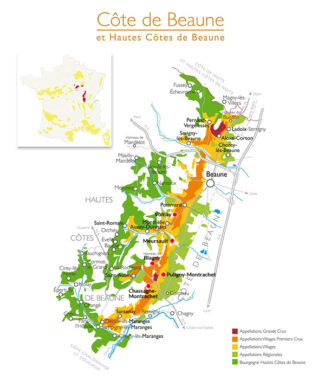
The offered 5-bottle package is comprised of one of each of the following wines at $358.
Meursault: A ‘Mouse’s Jump’
There’s a rumor that Meursault’s name (derived from the Roman ‘muris saltus’, or mouse-leap) is meant to measure the distance between Pinot Noir acres and Chardonnay acres within the appellation. Alas, it’s an apocryphal tale—it actually refers to the Ruisseau des Cloux stream, which the centurions were able to easily get across.
Sitting at the entrance to the Saint-Romain valley—a gap in the Côte d’Or—the commune of Meursault stretches for three miles from north to south, making it about twice as large as Puligny. Most of the vineyards are located on the slopes of the Côte d’Or escarpment and are blessed with classic Burgundian limestone and marl soils. The vines are planted in a variety of orientations in the local hillsides, due south through due east, and such differences becomes one of many contributing factors to the variation of styles in Meursault wines.
Meursault contains 714 acres of Village-level vineyards and 259 acres of Premier Cru sites; more than 200,000 cases of white wine are produced per year, plus around 4000 cases of red wine.
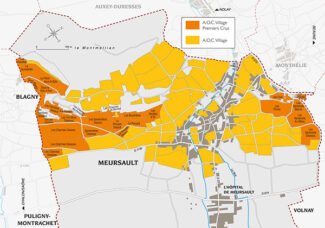
Domaine Buisson-Charles
Following the retirement of Michel Buisson in 2008, his daughter Catherine and her husband Patrick Essa rose to the occasion like grape skins in a vat of fermenting must. The domain they inherited covers 30 acres, nearly all of it in Meursault. Their five parcels of Village-level vines now average over 65 years in age, while the oldest are nearing the century mark. There is a small parcel of Meursault ‘Tessons’, one of the great lieux-dits of the region, lying on the hillside above the southern half of the village, and there are tiny pieces of four exceptional Premiers Crus. Only a few barrels of Les Charmes, Les Cras, La Goutte d’Or and Bouches-Chères are produced each year. The wines are unique in their intensity and persistence, and are neither too lean nor too fat. Says Patrick, “Our mantra of freshness comes from the fruit and the soil, which produces grapes without overt acidity.”
Volnay-Santenots is a beast with two heads, one red and one white. A highly-regarded Premier Cru vineyard, it falls under the Volnay appellation but its official location is south of the Volnay border in the commune of Meursault. The vineyard’s red wines take the Volnay name while its Chardonnays are labeled ‘Meursault’.
The vineyard lies on the steep mid-slope of the east-facing Côte d’Or hillside, although with a slightly southeast aspect. It is predominantly planted to Pinot Noir and in its entirety covers around 71 acres split into four lieux-dits: Santenots-du-Milieu, Les Santenots-Dessus, Les Santenots-Blanc and Les Plures. Santenots-du-Milieu is considered the best of these, and makes some of Volnay’s most heralded wines.
The soils in Santenots differ from those of Volnay proper in that they are made of harder limestone and are redder in color, betraying high iron content with proportionally more clay, providing excellent structure and richness to wines from the site.
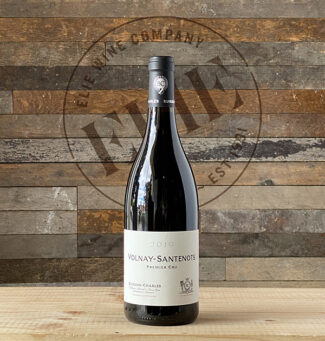 Domaine Buisson-Charles, 2019 Volnay Premier Cru Santenots ($144)
Domaine Buisson-Charles, 2019 Volnay Premier Cru Santenots ($144)
At a little over half an acre, the site of Pinot Noir from which this wine originates is tiny, but ‘Petures’ was planted in 1954 on a well-drained, east-facing slope and is similar to Volnay’s Les Cailleret—the soils are shallow, very red and have a delicate structure that is easy to work. The wine leads with a beautiful blackcherry/boysenberry nose and unwinds to reveal notes of Damson plums, smoke, sweet soil and spice.
Thierry et Pascale Matrot
In 1914, Joseph Matrot and his wife Marguerite took up residence in Marguerite’s family home with the intention of developing the property into a respected wine estate. Over the course of several generations, Domaine Matrot expanded to fifty acres, and in 2000, began harvesting the vineyards organically. Of the change, Thierry Matrot says, “It’s not a revolution, it’s just an evolution. Technology has made things easier, but our winemaking philosophy has changed very little. The vinification is about the same. We don’t use new oak for the Village wines or the Premiers Crus; we prefer to allow the terroir to express itself and to show the character of each vintage. And my father worked in just the same way.”
The estate extends across five villages, producing both regional appellations and several Premiers Crus in Meursault and in neighboring Puligny-Montrachet. Three quarters of the production is white and about 60% is destined for the export market.
Situated south of Volnay and Pommard in the Côte de Beaune, Meursault is a vast appellation usually known for its exceptional white wine, but under a generic appellation name, it may also produce reds with great character. They tend to be light in color with a distinctive Pinot Noir bouquet packed with red fruit and scented flowers while the palate has a rich red-berry fruit character and a bit of spice on the finish. Not much Meursault Rouge leaves the bistros of Paris and is always a treat to find a stash on this side of the Atlantic.
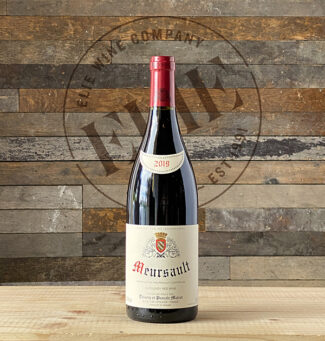 Thierry et Pascale Matrot, 2019 Meursault Rouge ($57)
Thierry et Pascale Matrot, 2019 Meursault Rouge ($57)
The grapes are harvested in two plots at the bottom of the Volnay-Santenots slopes; the wine is structured and fleshy, showing blackberries, red currants, warm pie spice and underbrush notes behind fine tannins and a complex finish.
Blagny is a hamlet found at the foot of the Côte d’Or escarpment between the communes of Puligny-Montrachet and Meursault. (For those interested in Trivia Night details, a hamlet is simply a village without a church.) In this, it is an exception to normally strict traditions of Burgundian hierarchy; a hamlet with its own appellation is an anomaly, and one which speaks to the quality of its wine.
The specific ‘Blagny’ appellation is reserved solely for red wines; it was created in 1937 to cover the output of seven vineyards in an area otherwise dominated by white wine production. The soils of Blagny vineyards are not quite as well suited to white wine production as those closer to Puligny and Meursault, but sadly, the growing prestige of nearby Meursault means that Blagny’s vineyards are increasingly being planted to Chardonnay. These wines must be labeled under the Meursault-Blagny appellation, and all Meursault-Blagny wines are Premier Cru level. Blagny Premier Cru wines are reds from the better plots in the AOP.
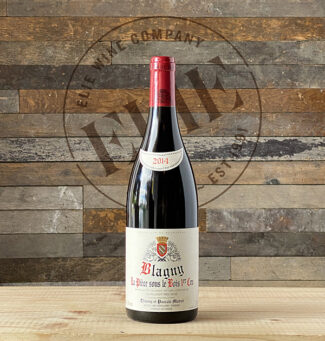 Thierry et Pascale Matrot, 2014 Blagny Premier Cru La Pièce Sous le Bois ($62)
Thierry et Pascale Matrot, 2014 Blagny Premier Cru La Pièce Sous le Bois ($62)
‘La Pièce Sous le Bois’ is a Premier Cru vineyard that covers both the Blagny and Meursault appellations, for red and white wines respectively. The vineyard is near the top of the Côte d’Or escarpment at 1,200 feet, while the land still higher up is wooded, which is where the name—meaning ‘the forest plot’—comes from. Soils are thin and gravelly and composed primarily of reddish limestone. The wine shows black raspberry, wild strawberry, dried flowers and forest floor aromas with plum and cassis liqueur-like nuances in the mouth.
Chassagne-Montrachet: A Double Agent
Discovering appellations that are less fashionable has always been a passion for us at Elie’s, but finding gems from top names that don’t quite fit ‘the expected bill’ can be equally enlightening. Enter Chassagne-Montrachet rouge.
As mentioned, though most of its history Chassagne-Montrachet was a red wine appellation (as was Meursault), and although some of the top sites were once rated as highly as Musigny, Clos de la Roche and Clos de Tart, these days, Pinot Noir only represents about 20% of production within Chassagne-Montrachet’s Premiers Crus. Clos Saint Jean is arguably the most ideal terroir for red wine and produces unique, finesse-laden gems that are at odds with the appellation’s reputation for robust reds.
Chardonnay remains the variety-of-choice for Village-level wines, but there are top examples of Pinot Noir to be found in this category as well and generally at a great price for the quality.
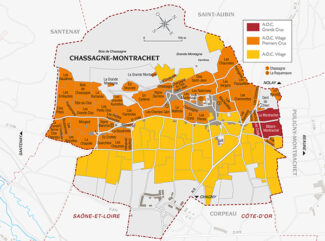
Domaine Vincent & Sophie Morey
When wine stars collide, the result is often a synergy of explosive quality. Sophie and Vincent Morey both come from families of winegrowers in Santenay and Chassagne-Montrachet respectively. In 1986, after studies at Beaune’s Lycée Viticole and work experience in Saint-Émilion in the Bordeaux region, Vincent rejoined the domaine led by his father Bernard Morey. That same year Sophie was vinifying her first vintage for the Ménager-Belland domaine in Santenay, where she had inherited the tradition of winemaking from her mother.
In 2006, the couple set up their own domain, and harvested their first vintage the following year. They think of their vineyards as a garden to be doted upon, and reckon that adaptability is key for continued success in the changing climates of central France.
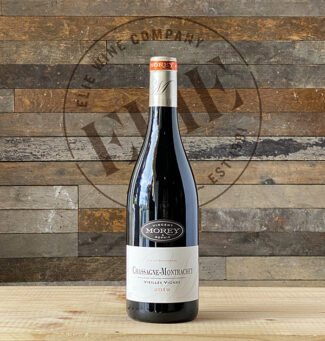 Domaine Vincent & Sophie Morey ‘Vieilles Vignes’, 2019 Chassagne-Montrachet Rouge ($46)
Domaine Vincent & Sophie Morey ‘Vieilles Vignes’, 2019 Chassagne-Montrachet Rouge ($46)
Blended from five parcels of level ground close to Puligny-Montrachet, the wine is drawn from three acres of clay/limestone at elevations above 700 feet. A hint of mint is characteristic of this wine, with opulent notes of silken Morello cherry and ripe blackberry rounding out the palate. A nice wine for aging, but very approachable now.
Vincent Girardin
Based in Meursault, Vincent Girardin (the domain’s founder) originally farmed around 50 acres while acting as a négociant, buying fruit from growers who adhered to a code of practice upon which he insisted, including higher trellising for better photosynthesis and avoiding the use of herbicides and insecticides. When Vincent Girardin sold the business in 2012, Eric Germain—his winemaker since the early 2000s—along with a team of nine, ensured that Girardin’s winemaking philosophy and purity of expression would continue.
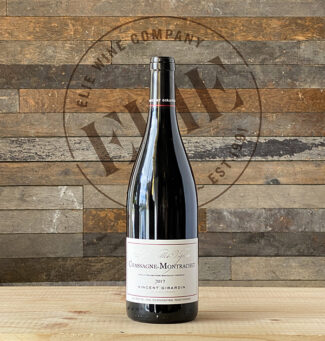 Vincent Girardin ‘Les Vieilles Vignes’, 2017 Chassagne-Montrachet Rouge ($49)
Vincent Girardin ‘Les Vieilles Vignes’, 2017 Chassagne-Montrachet Rouge ($49)
From vines with a minimum age of fifty years, the wine is airy and elegant with pure Pinot profile; hints of minerality, earth and a touch of smoke complement the ripe, concentrated cherry cola, powdered chocolate, cinnamon, blackberry, herbs and offer excellent length and punch.
Côte-de-Beaune Vintage Journal
2019
2019 represented a learning curve for Côte de Beaune, as the effects of climate change were so undeniable that everyone, from growers to winemakers to marketers, saw that the future would belong to those who could adapt. The winter was extremely mild but moved into a chilly spring, with April bringing biting frosts that cut deeply into yields. Flowering was uneven due to a cooler than average June and some bunches suffered from millerandage, which again decimated yields. Temperatures warmed up rapidly, and to such an extent that by July and August many of the vines were suffering from heat and drought stress.
The silver lining was that the grapes that survived were concentrated and ripe. The reds in particular are complex, richly fruit-forward and refined, with the best examples likely to cellar well. Winemakers in the Côte-de-Beaune proved their resilience by snatching victory from the jaws of defeat… and de weather.
2017
After the disastrous 2016 growing season, 2017 found the vines of the Côte-de-Beaune still in recovery mode. Gratefully, the vintage was one of the most consistent in recent memory.
Despite a cold snap in January, the winter was cool, dry and largely free of snow. By February and March, temperatures rose significantly, prompting an early budburst. The warm weather inspired rapid new vine growth; however April saw a sharp drop in temperatures, which brought some frost damage to the entire Côte d’Or. However, the previous year’s devastating frosts had significantly prepared producers and more preventative measures were already in place to minimize damage. Luckily, temperatures never sank low enough for frost to fully manifest itself and the bullet was dodged. The summer was mostly warm and dry with the occasional much-needed rain shower and a less-needed bout of hail in July. Many of the vines that had suffered badly in the previous year’s frosts had gone into overdrive this year and were in some cases, overladen with fruit. Wise producers chose to green harvest to counter this problem, as too much fruit can result in a lack of concentration in the individual berries. Overall, the wines from 2017 are very good.
2014
Despite a difficult start, 2014 resolved itself and became a passable—even a good vintage. The spring was mild and dry and produced a successful early budburst and flowering. Warm, even conditions continued until a violent hailstorm struck late in June. Vineyards throughout the Côte-de-Beaune were badly battered, with sites in Beaune, Meursault, Volnay and Pommard particularly affected. Yields were down across the board and July failed to bring better weather; conditions remained cool and wet with few days of real heat. Late July also saw another hailstorm hit. By mid-August, better weather began to prevail, and sunny days started to dry out the vineyards. Despite the damp, rot wasn’t a huge a problem, but drosophila flies were. That said, infected berries smell strongly of vinegar, so it’s easy for producers to avoid the bad fruit. Good September weather allowed for the harvest to begin at a leisurely pace and in the end, the vintage was smaller than usual, but the quality was high. The red wines in particular are classic in character.
- - -
Posted on 2022.08.15 in Côte de Beaune, Chassagne-Montrachet, Meursault, Blagny, France, Wine-Aid Packages
Featured Wines
- Notebook: A’Boudt Town
- Saturday Sips Wines
- Saturday Sips Review Club
- The Champagne Society
- Wine-Aid Packages
Wine Regions
Grape Varieties
Aglianico, Albarino, Albarín Blanco, Albarín Tinto, Albillo, Aleatico, Arbanne, Aubun, Barbarossa, barbera, Beaune, Biancu Gentile, bourboulenc, Cabernet Franc, Cabernet Sauvignon, Caino, Caladoc, Calvi, Carcajolu-Neru, Carignan, Chablis, Chardonnay, Chasselas, Clairette, Corvina, Cot, Counoise, Erbamat, Ferrol, Fiano, Frappato, Friulano, Fromenteau, Fumin, Garnacha, Gewurztraminer, Godello, Graciano, Grenache, Grolleau, Groppello, Juan Garcia, Lambrusco, Loureira, Macabeo, Macabou, Malvasia, Malvasia Nera, Marsanne, Marselan, Marzemino, Melon de Bourgogne, Merlot, Mondeuse, Montanaccia, Montepulciano, Morescola, Morescono, Moscatell, Muscadelle, Muscat, Natural, Nero d'Avola, Parellada, Patrimonio, Petit Meslier, Petit Verdot, Pineau d'Aunis, Pinot Auxerrois, Pinot Blanc, Pinot Gris, Pinot Meunier, Pinot Noir, Poulsard, Prieto Picudo, Rondinella, Rousanne, Roussanne, Sangiovese, Sauvignon Blanc, Savignin, Semillon, Souson, Sparkling, Sumoll, Sylvaner, Syrah, Tannat, Tempranillo, Trebbiano, Trebbiano Valtenesi, Treixadura, Trousseau, Ugni Blanc, vaccarèse, Verdicchio, Vermentino, Viognier, Viura, Xarel-loWines & Events by Date
- April 2024
- March 2024
- February 2024
- January 2024
- December 2023
- November 2023
- October 2023
- September 2023
- August 2023
- July 2023
- June 2023
- May 2023
- April 2023
- March 2023
- February 2023
- January 2023
- December 2022
- November 2022
- October 2022
- September 2022
- August 2022
- July 2022
- June 2022
- May 2022
- April 2022
- March 2022
- February 2022
- January 2022
- December 2021
- November 2021
- October 2021
- September 2021
- August 2021
- July 2021
- June 2021
- May 2021
- April 2021
- March 2021
- February 2021
- January 2021
- December 2020
- November 2020
- October 2020
- September 2020
- August 2020
- July 2020
- June 2020
- May 2020
- April 2020
- March 2020
- February 2020
- January 2020
- December 2019
- November 2019
- October 2019
- September 2019
- August 2019
- July 2019
- June 2019
- May 2019
- April 2019
- March 2019
- February 2019
- January 2019
- December 2018
- November 2018
- October 2018
- September 2018
- August 2018
- July 2018
- June 2018
- May 2018
- April 2018
- March 2018
- February 2018
- January 2018
- December 2017
- November 2017
- October 2017
- September 2017
- August 2017
- July 2017
- June 2017
- May 2017
- April 2017
- March 2017
- February 2017
- January 2017
- December 2016
- November 2016
- October 2016
- September 2016
- August 2016
- July 2016
- June 2016
- May 2016
- April 2016
- March 2016
- February 2016
- January 2016
- December 2015
- November 2015
- October 2015
- September 2015
- August 2015
- July 2015
- June 2015
- May 2015
- April 2015
- March 2015
- February 2015
- January 2015
- December 2014
- November 2014
- October 2014
- September 2014
- August 2014
- July 2014
- June 2014
- April 2014
- March 2014
- February 2014
- January 2014
- December 2013
- November 2013
- October 2013
- September 2013
- August 2013
- July 2013
- June 2013
- May 2013
- April 2013
- March 2013
- February 2013
- January 2013
- December 2012
- November 2012
- October 2012
- February 2004
Search



